 W
WWilliam Alley was an Anglican prelate who was the Bishop of Exeter during the reign of Queen Elizabeth I.
 W
WWilliam Fitzalan, 9th Earl of Arundel, 6th Baron Maltravers was an English nobleman.
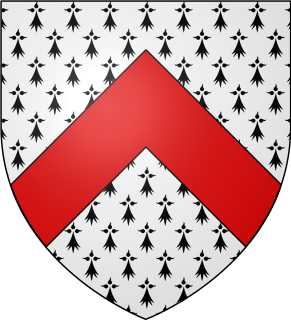 W
WJohn Tuchet, 6th Baron Audley, 3rd Baron Tuchet was an English politician.
 W
WJean du Bellay was a French diplomat and cardinal, a younger brother of Guillaume du Bellay, and cousin and patron of the poet Joachim du Bellay. He was bishop of Bayonne by 1526, member of the Conseil privé of King Francis I from 1530, and bishop of Paris from 1532. He became Bishop of Ostia and Dean of the College of Cardinals in 1555.
 W
WWilliam de Berkeley, 1st Marquess of Berkeley was an English peer, given the epithet "The Waste-All" by the family biographer and steward John Smyth of Nibley. He was buried at "St. Augustine's Friars, London" according to one source, but most likely in the Berkeley family foundation of St Augustine's Abbey, Bristol.
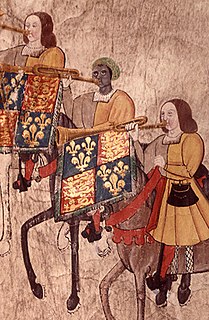 W
WJohn Blanke was a black musician in London in the early 16th century.
 W
WNicholas Bourbon was a French court preceptor and poet. He wrote a collection of poems called Nugae, which are known as the Bagatelles in French. He is the great-uncle of Nicholas Bourbon (1574–1644), a member of the Académie française.
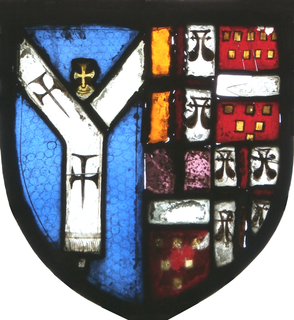 W
WThomas Bourchier was a medieval English cardinal, Archbishop of Canterbury, and Lord Chancellor of England.
 W
WWilliam Bradbridge (1501–1578) was an English bishop of Exeter.
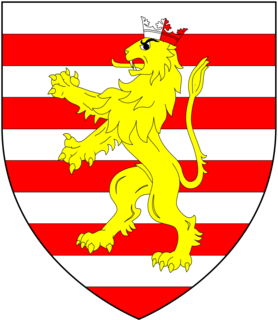 W
WSir William Brandon, of Wangford in Suffolk, was an English landowner, administrator, soldier, courtier and politician. His grandson was Charles Brandon, 1st Duke of Suffolk, a courtier and close friend of King Henry VIII.
 W
WSir William Brandon of Soham, Cambridgeshire was Henry Tudor's standard-bearer at the Battle of Bosworth, where he was killed by King Richard III. He was the father of Charles Brandon, 1st Duke of Suffolk.
 W
WSir Robert Broke SL was a British justice, politician and legal writer. Although a landowner in rural Shropshire, he made his fortune through more than 20 years' service to the City of London. MP for the City in five parliaments, he served as Speaker of the House of Commons in 1554. He is celebrated as the author of one of the Books of authority. A prominent religious conservative, he founded a notable recusant dynasty. His surname is also rendered Brooke, and occasionally Brook, which are, for modern readers, better indicators of pronunciation.
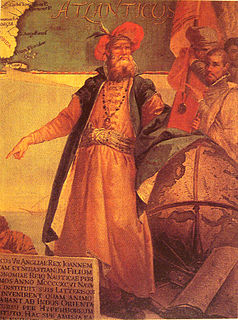 W
WJohn Cabot was an Italian navigator and explorer. His 1497 voyage to the coast of North America under the commission of Henry VII of England is the earliest known European exploration of coastal North America since the Norse visits to Vinland in the eleventh century. To mark the celebration of the 500th anniversary of Cabot's expedition, both the Canadian and British governments elected Cape Bonavista, Newfoundland, as representing Cabot's first landing site. However, alternative locations have also been proposed.
 W
WSir William Calthorpe KB was an English knight and Lord of the Manors of Burnham Thorpe and Ludham in Norfolk. He is on record as High Sheriff of Norfolk and Suffolk in 1442, 1458 and 1464 and 1476.
 W
WWilliam Caxton was an English merchant, diplomat, and writer. He is thought to be the first person to introduce a printing press into England, in 1476, and as a printer was the first English retailer of printed books.
 W
WEustace Chapuys, the son of Louis Chapuys and Guigonne Dupuys, was a Savoyard diplomat who served Charles V as Imperial ambassador to England from 1529 until 1545 and is best known for his extensive and detailed correspondence.
 W
WRobert Chester is the mysterious author of the poem Love's Martyr which was published in 1601 as the main poem in a collection which also included much shorter poems by William Shakespeare, Ben Jonson, George Chapman and John Marston, along with the anonymous "Vatum Chorus" and "Ignoto".
 W
WJohn Cheyne, Baron Cheyne KG KB was Master of the Horse to King Edward IV and personal bodyguard to King Henry VII of England.
 W
WHugh Clopton was a Lord Mayor of London, a member of the Worshipful Company of Mercers and a benefactor of his home town of Stratford-upon-Avon in Warwickshire.
 W
WPeter Courtenay was Bishop of Exeter (1478-87) and Bishop of Winchester (1487-92), and also had a successful political career during the tumultuous years of the Wars of the Roses.
 W
WHieronimo Custodis was a Flemish portrait painter active in England in the reign of Elizabeth I.
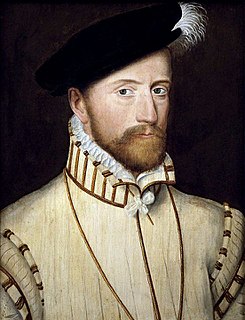 W
WJacques d'Albon, Seigneur de Saint-André was a French soldier and favorite of Henry II of France. He was made marshal of France, governor of Lyonnais and ambassador in England. He served with great bravery against the emperor Charles V in 1552. In 1557 he was taken prisoner at the battle of Saint Quentin, but was released the following year, and took part in negotiating the Peace of Cateau-Cambrésis. In April 1561, several months after the death of Francis II, he formed an alliance with the Constable of France Anne de Montmorency and Francis, duke of Guise, known as the triumvirate. Their aim was to combat Protestantism and limit the influence of the queen-mother, Catherine de' Medici. Saint-André was killed on the field at the Battle of Dreux by de-Mezieres-en-Drouais as the result of a personal grudge.
 W
WJames FitzGerald, 10th Earl of Desmond was the son of Maurice FitzGerald, 9th Earl of Desmond. He plotted against King Henry VIII with King Francis I of France in 1523 and with Emperor Charles V in 1528 or 1529.
 W
WJames FitzGerald, de jure 12th Earl of Desmond was the grandson of Thomas FitzGerald, 11th Earl of Desmond. James's father, Maurice, had died of the plague shortly after Thomas attained the earldom, so upon Thomas's death, James inherited it. However, James's title was disputed by his granduncle John FitzGerald, de facto 12th Earl of Desmond. John died in 1536. Although James lived until 1540, he was succeeded by John's son James FitzGerald, 14th Earl of Desmond.
 W
WJames (Séamus) FitzJohn FitzGerald was an Irish nobleman, the second son of John FitzGerald, de facto 12th Earl of Desmond, and Móre O'Brien, daughter of Donogh O'Brien of Carrigogunnell, Lord of Pobble. He held the title of Earl of Desmond from 1536 until his death in 1558.
 W
WJohn FitzGerald, de facto 12th Earl of Desmond was the brother of Thomas FitzGerald, 11th Earl of Desmond. Upon his brother's death in 1534, John disputed the title to the earldom of his brother's grandson, James FitzGerald, de jure 12th Earl of Desmond.
 W
WMaurice FitzGerald, 9th Earl of Desmond was the brother of James FitzGerald, 8th Earl of Desmond.
 W
WThomas FitzGerald, 11th Earl of Desmond was the uncle of James FitzGerald, 10th Earl of Desmond.
 W
WJean de Dinteville (1504–1555) was a French diplomat. He is the left-hand figure in Holbein's 1533 painting The Ambassadors, painted whilst he was French ambassador to London, and which he presumably commissioned. Dinteville's motto was Memento mori, meaning "Remember thou shalt die."
 W
WRichard Edwardes was an English poet, playwright, and composer; he was made a Gentleman of the Chapel Royal, and was master of the singing boys. He was known for his comedies and interludes. He was also rumoured to be an illegitimate son of Henry VIII.
 W
WGómez Suárez de Figueroa y Córdoba, 1st Duke of Feria (1520?–1571) was a Spanish nobleman and diplomat, and close advisor of Philip II's.
 W
WSir Ralph Fitzherbert was Lord of the manor of Norbury, Derbyshire. His effigy in his suit of armour at Norbury church are reproduced in the Victoria and Albert Museum, in contemporary armour.
 W
WMarcus Gheeraerts the Elder, Marc Gerard and Marcus Garret was a Flemish painter, draughtsman, print designer and etcher who was active in his native Flanders and in England. He practised in many genres, including portraits, religious paintings, landscapes and architectural themes. He designed heraldic designs and decorations for tombs. He is known for his creation of a print depicting a map of his native town Bruges and the illustrations for a Dutch-language publication recounting stories from Aesop's Fables. His attention to naturalistic detail and his practice of drawing animals from life for his prints had an important influence on European book illustration. His son Marcus the Younger became a prominent court painter at the English court.
 W
WFerrante I Gonzaga was an Italian condottiero, a member of the House of Gonzaga and the founder of the branch of the Gonzaga of Guastalla.
 W
WLouis de Bruges, Lord of Gruuthuse, Prince of Steenhuijs, Earl of Winchester, was a Flemish courtier, bibliophile, soldier and nobleman. He was awarded the title of Earl of Winchester by King Edward IV of England in 1472, and was Stadtholder of Holland and Zeeland 1462–77.
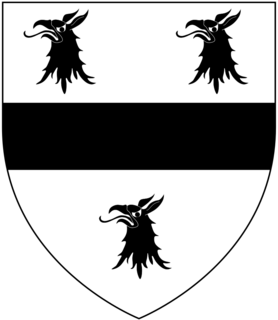 W
WJohn Hales was Bishop of Coventry and Lichfield (1459-1490). He was one of the Worthies of Devon of the biographer John Prince (d.1723).
 W
WEdmund Grey, 1st Earl of Kent, English administrator, nobleman and magnate, was the son of Sir John Grey, KG and Constance Holland. His main residence was at Wrest near Silsoe, Bedfordshire.
 W
WGerard FitzGerald, 9th Earl of Kildare, also known in Irish as Gearóid Óg, was a leading figure in 16th-century Irish History. In 1513 he inherited the title of Earl of Kildare and position of Lord Deputy of Ireland from his father.
 W
WGilles de la Pommeraie was a 16th-century French diplomat and Baron d'Entrammes.
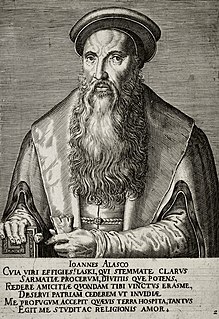 W
WJan Łaski or Johannes à Lasco was a Polish Reformed reformer. Owing to his influential work in England during the English Reformation, he is known to the English-speaking world by the Anglicised form John à Lasco.
 W
WJohn de la Pole, 1st Earl of Lincoln was a leading figure in the Yorkist aristocracy during the Wars of the Roses.
 W
WFrancis Lovell, 9th Baron Lovell, 6th Baron Holand, later 1st Viscount Lovell KG was an English nobleman who was an ally of King Richard III during the War of the Roses. Sir William Catesby, Sir Richard Ratcliffe and he were among Richard's closest supporters, famously called "the Cat, the Rat and Lovell our dog" in an anti-Ricardian squib. In addition to being an ally, Lovell is attributed as Richard's best friend.
 W
WAbd el-Ouahed ben Messaoud ben Mohammed Anoun was principal secretary to the Moroccan ruler Mulay Ahmad al-Mansur, and ambassador to the court of Queen Elizabeth I of England in 1600, whose primary task was to promote the establishment of an Anglo-Moroccan alliance.
 W
WJohn Morton was an English prelate who served as Archbishop of Canterbury from 1486 until his death and also Lord Chancellor of England from 1487. He was elevated to the cardinalate in 1493.
 W
WRobert Morton was an English priest and Bishop of Worcester.
 W
WAntoine, 1st comte de Noailles became admiral of France, and was ambassador in England during three important years, 1553–1556, maintaining a gallant but unsuccessful rivalry with the Spanish ambassador, Simon Renard.
 W
WHenry Percy, 4th Earl of Northumberland KG was an English aristocrat during the Wars of the Roses. After losing his title when his father was killed fighting the Yorkists, he later regained his position. He led the rear guard of Richard III's army at the Battle of Bosworth, but failed to commit his troops. He was briefly imprisoned by Henry VII, but later restored to his position. A few years later he was murdered by citizens of York during a revolt against Henry VII's taxation.
 W
WRowland FitzEustace, 1st Baron Portlester was an Irish peer, statesman and judge. He was one of the dominant political figures in late fifteenth-century Ireland, rivalled in influence only by his son-in-law, the "Great" Earl of Kildare.
 W
WSimon Renard, Sieur of Bermont and Lieutenant of Aumont or Amont, was a Burgundian diplomat who served as an advisor to Emperor Charles V and his son Philip II of Spain, who were also counts of Burgundy. Renard had the court appointment of Master of Requests in Ordinary of the Emperor's household. He was ambassador of Spain in France and England. As ambassador to England he acquired an extraordinary degree of influence over Mary I of England, and until her marriage to Philip, which he promoted, he was thought by many to be controlling the English Government.
 W
WMiles Salley was a late 15th-century Abbot of Eynsham Abbey and Abingdon Abbey and an early 16th-century Bishop of Llandaff. Salley was Abbot of Eynsham in Oxfordshire in the 1490s. He was appointed Bishop of Llandaff, where he is remembered for his building work at the Bishop's Palace in Mathern in Monmouthshire.
 W
WSir John Savage, KG (1444–1492), of Cheshire landed gentry, was a noted English military commander of the late 15th-century, who fought at the Battle of Bosworth Field, before being killed on active service in France.
 W
WJohn Scrope, 5th Baron Scrope of Bolton, KG was an English Yorkist nobleman.
 W
WCasper Van Senden was an Elizabethan Lübeck merchant who bargained for a deal in 1596 whereby through ensuring the safe return of eighty-nine of Queen Elizabeth's subjects who had been detained in the Catholic realms of Portugal and Spain, sought to gain a licence to deport Africans from England. This incident has been quoted to suggest a consistent policy of racial exclusion in sixteenth century England.
 W
WJohn Seymour of Wulfhall, of Stalbridge, of Stinchcombe and of Huish, all in Wiltshire, England, was warden of Savernake Forest and a prominent member of the landed gentry in the counties of Wiltshire, Somerset and Dorset. He was the grandfather of Jane Seymour, the third wife of King Henry VIII, and was thus great-grandfather of King Edward VI.
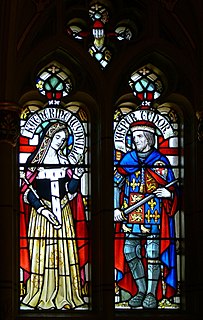 W
WJasper Tudor, 1st Duke of Bedford, 1st Earl of Pembroke, also called Jasper of Hatfield, was the uncle of King Henry VII of England and a leading architect of his nephew's successful accession to the throne in 1485. He was from the noble Tudor family of Penmynydd in North Wales.
 W
WPerkin Warbeck was a pretender to the English throne. Warbeck claimed to be Richard of Shrewsbury, Duke of York, who was the second son of Edward IV and one of the so-called "Princes in the Tower". Richard, were he alive, would have been the rightful claimant to the throne, assuming that his elder brother Edward V was dead, and that he was legitimate – a contentious point.
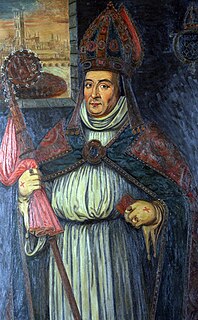 W
WWilliam Waynflete, born William Patten, was Provost of Eton (1442–1447), Bishop of Winchester (1447–1486) and Lord Chancellor of England (1456–1460). He is best remembered as the founder of Magdalen College and Magdalen College School in Oxford.
 W
WJohn (de) Welles, 1st Viscount Welles, KG was an English Lancastrian nobleman who was made a Knight of the Garter.
 W
WRalph Neville, 3rd Earl of Westmorland was an English peer. He was the grandfather of Ralph Neville, 4th Earl of Westmorland.
 W
WEdward Stafford, 2nd Earl of Wiltshire was an English nobleman.